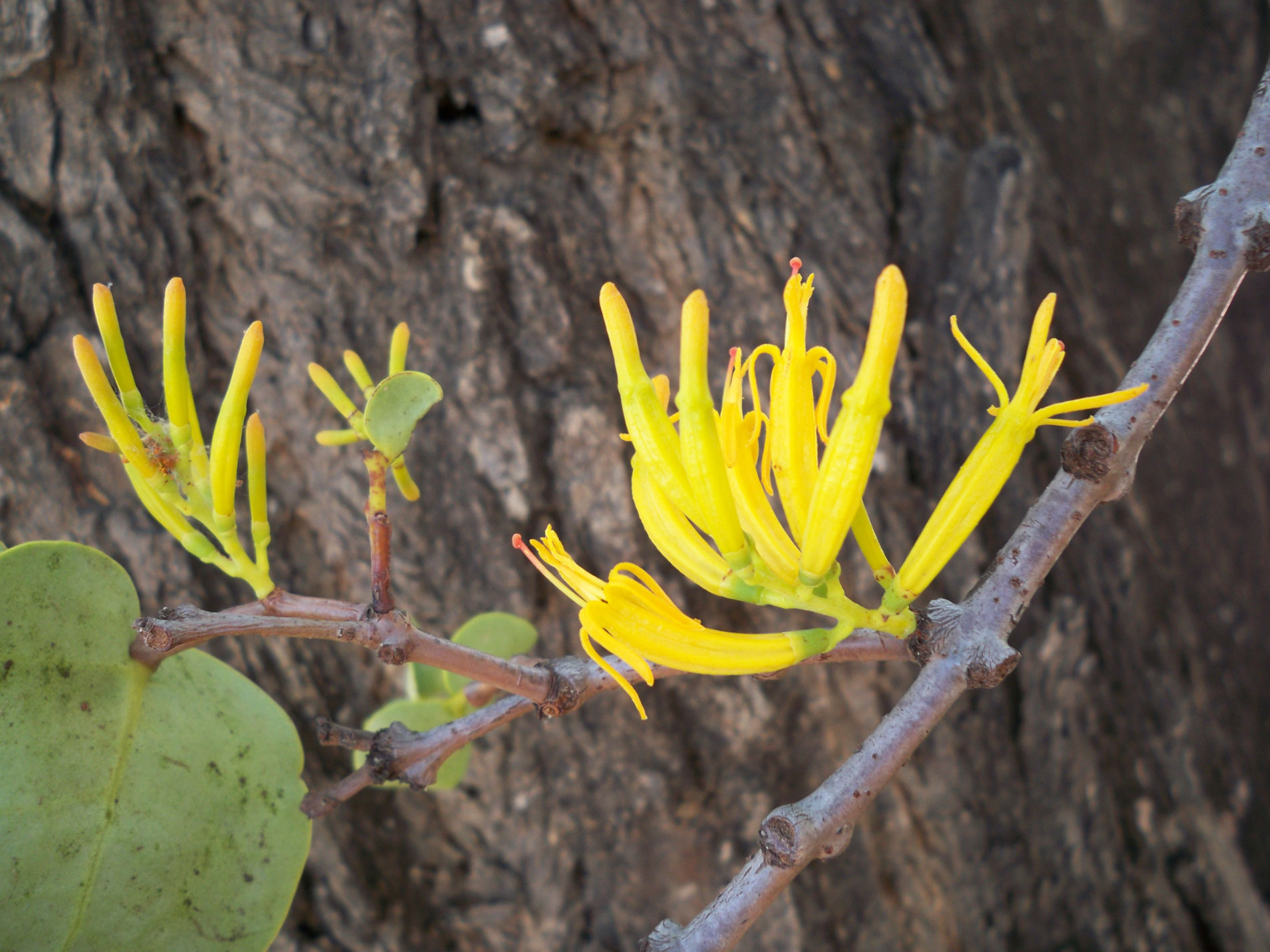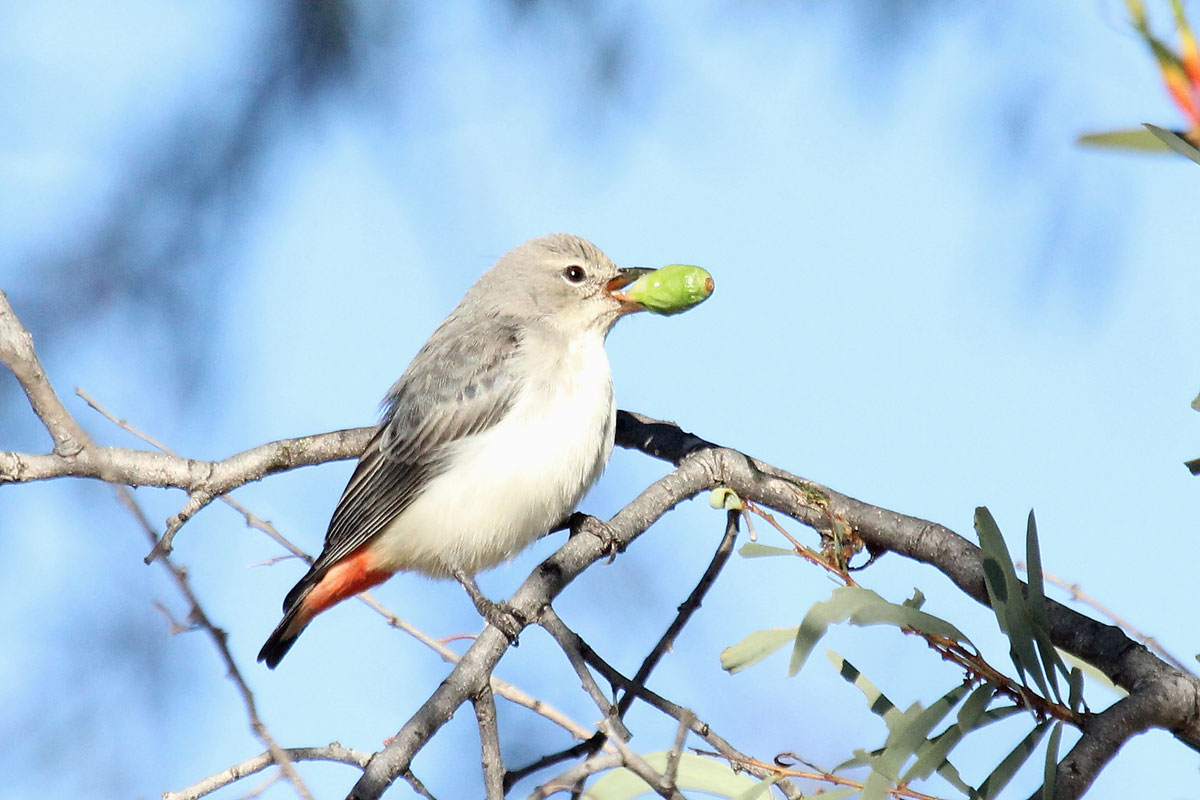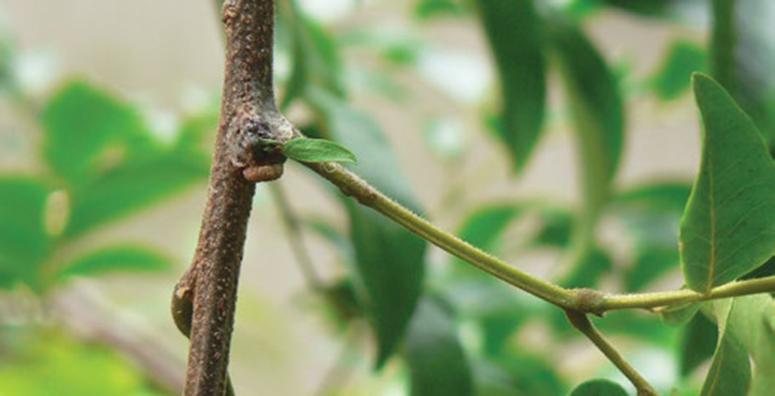Australian mistletoes have long been considered an underdog of the botanical world, probably similar to grasses, sedges, and dare we say bryophytes (ie. mosses, liverworts and hornworts). No one ever mentions hornworts (but watch this space, as it is only a matter of time before an article is written!).
Maybe it is because mistletoes have suffered, not from obsolescence (poor hornworts), but from disdain and ignorance. Many people still believe that mistletoes cause the death of their host trees, but this is a myth and far from the truth.

Flowers of Sessile- leaved Mistletoe (Dendrophthoe homoplastica). Photo by John Moss.
Mistletoes are ‘hemiparasitic’ plants that obtain water and nutrients from their host plant. They also photosynthesise enabling them to create their own carbohydrates so they do not have to extract carbon from their host. Healthy hosts and healthy mistletoes basically live in harmony. When one becomes stressed due to drought, overgrazing, insect attack, fragmentation of habitat or other factors, they both suffer. If a host tree dies, the mistletoe also dies; it is a lose-lose situation.
In rural areas, it is commonplace to see isolated paddock or roadside eucalypts in poor health, with lots of mistletoes attached. If the trees were healthy, with vibrant foliage, and in a forest, the mistletoes would simply blend in. A stressed tree with a load of apparent causal mistletoes, is actually a sign that other factors (usually human induced) are the root cause. For example, many isolated paddock trees are stressed by high evaporation rates due to poor vegetation cover, compacted soil, wind exposure and increased surface water runoff, resulting in less rainwater soaking in. Plus, wildlife that might eat mistletoe leaves, such as possums, are also fewer.
Australia has about 91 species of mistletoe, of which about 36 species occur in South East Queensland. Some mistletoe species have specific host plants, whereas other species are generalist and will attach to a wide range of plants. For example, the Mangrove Mistletoe ( Amyema mackayensis ) only occurs on Grey Mangroves ( Avicennia marina ), whereas the Yellow-flowered Mistletoe ( Dendrophthoe vitellina ) has about 100 different host species. Some mistletoes are even hosts for other mistletoe species. The diversity of nature!
Mistletoes attach to their host plant through a modified root called an ‘haustorium’ (see image below). This haustorium allows water and nutrients to flow from the host into the mistletoe.
Mistletoe leaves sometimes take on the appearance of the leaves of their host plant; this is termed ‘cryptic mimicry’. This could be a result of the mistletoe receiving hormones from the host, or maybe the result of favourable mutations giving an evolutionary advantage, or maybe it is pure coincidence. We are not really sure.

That’s a mouthful! Soon after eating this mistletoe fruit, this female Mistletoebird excreted the mistletoe seed, wiping it on a branch. The sticky fruit pulp helped adhere it to the branch. Eventually, the seed may germinate and start a new mistletoe plant. Photo by Deborah Metters.
Mistletoes are incredibly important in Australia’s environment. Many animals depend on mistletoes for food. Leaves and fruit are readily eaten by possums, frugivorous birds love the fruit, and honeyeaters drink nectar from the flowers. Mistletoes are also host plants for a wide range of beautiful butterflies and moths, in addition to many other invertebrates. Often mistletoes are the only fruit or flower source available, especially during dry times. It is becoming clearer that mistletoes have a greater role in sustaining biodiversity than was previously realised. Recent research has found that mistletoes may increase soil fertility resulting in other flow-on effects through an ecosystem.

The new frontier in revegetation – incorporating mistletoes. Shown here is a Brush Mistletoe (Amylotheca dictyophleba) artificially planted on Snow-wood (Pararchidendron pruinosum). Photo by John Moss
Mistletoe seeds readily germinate, but only a few successfully attach to a host. An interesting new frontier is the propagation and inclusion of mistletoes in revegetation and restoration projects. This has already been attempted with mixed results at one site in South East Queensland. Hopefully in the near future, one would be able to buy plants from native plant nurseries with attached mistletoes.
Feel free to contact us if you have a story about mistletoes from your place, especially if you have successfully propagated them.
Article by Deborah Metters, SEQ Catchments, and John Moss, co- author of The Mistletoes of Subtropical Queensland, New South Wales and Victoria.

Hi There,
Do you know where I could buy mistletoe seeds from. I have recently cut down a bottle brush full of mistletoe and have only since read about their importance in biodiversity. We have sugar gliders and a huge array of birds around our house and would like to keep it that way. Any help would be appreciated
Regards
Jeremy
Hi Jeremy
We are unaware of anywhere where you can buy mistletoe seed. Given that mistletoe plants are partly parasitic, it is very difficult, but not impossible, to successfully propagate them. You will need to collect and propagate the mistletoe seed and attach the seedling to its host plant. The book, Mistletoes of Subtropical Qld, NSW and Victoria is a must have if you are interested in this topic. https://www.forestheart.com.au/product/mistletoes-of-subtropical-qld-nsw-victoria/
Hi there,
I live in Wamuran, Qld. I have what I believe is mistletoe growing on my bottle trees. The flowers are just stunning. If I was able to I could share a few photo’s. Thanks for sharing this invaluable information on them.
Kind regards,
Therese
Hi Therese. There is a great Facebook Page dedicated to Queensland Plant Identification. https://www.facebook.com/groups/1590103837875621
Hi Deborah, We live in central Victoria & have had several natural grey box mistletoe. Unfortunately they sre dying. It has been a slow process over the last 5 years (approximately) but now they are just black stalks. Do you have any suggestions around what might be causing this.
Thanks
Sandy